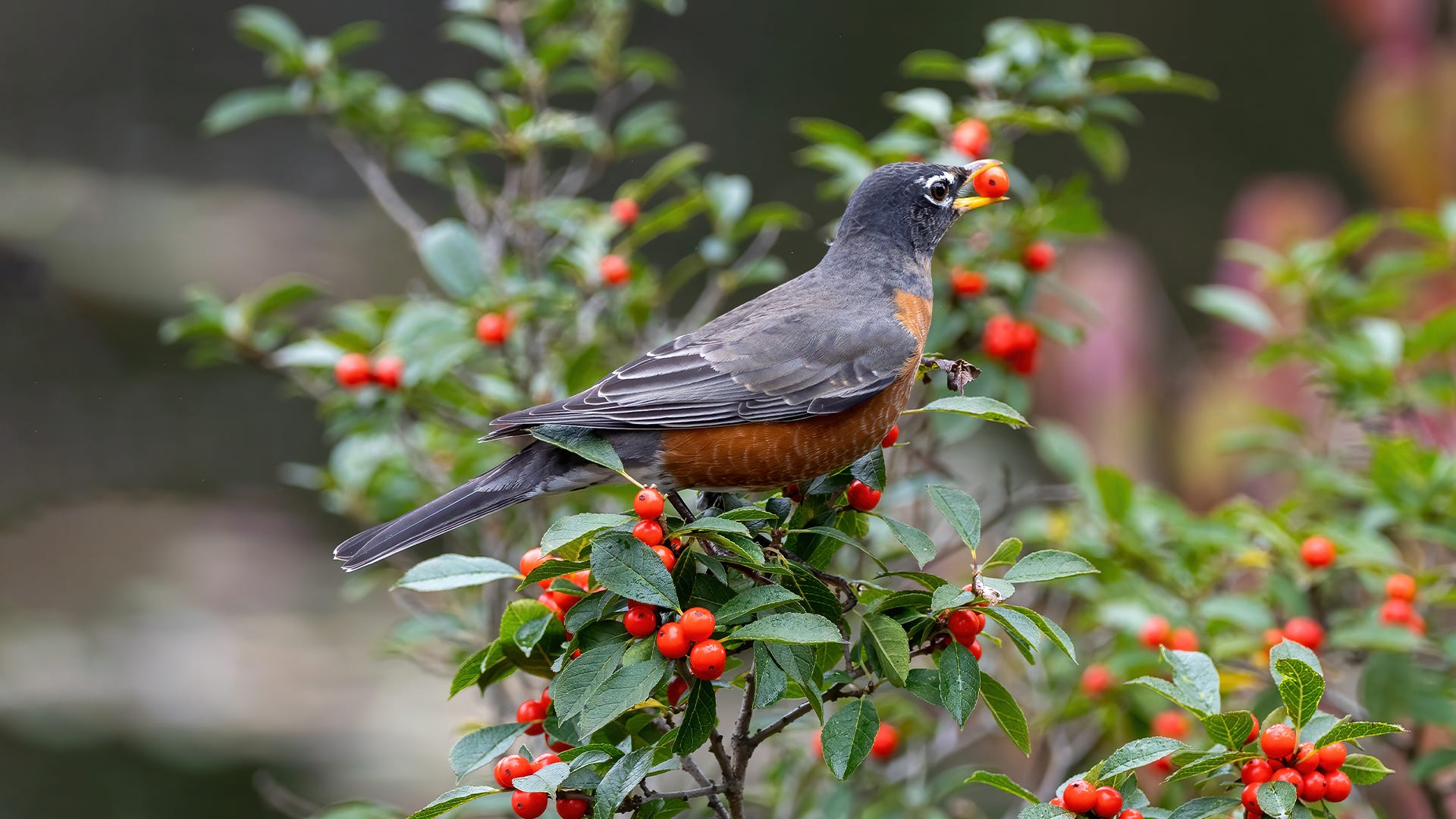
Many different types of birds—finches, grosbeaks, chickadees, nuthatches, cardinals, doves, and many more—will happily visit feeders filled with bird seed. If those feeders aren’t properly placed, however, small birds may not find them easily. Or, they may not feel comfortable feeding.
Considerations for Bird Feeder Placement
There are many factors to consider when deciding where to hang a new seed feeder. The type of feeder matters, as well as what seeds are offered. If a feeder is only filled with seed, it should be placed near brushy areas. That’s where seed-eating birds feel safest.
If the feeder also offers a suet cake, however, placing it closer to large trees where woodpeckers will feed can make birds more comfortable.
The size and stability of the feeder need to be taken into consideration so it won’t fall, tip, or spill. Smaller, lighter feeders should be away from breezy areas. Large feeders need secure hooks, thick branches, or other sturdy supports capable of holding their weight.
Position Bird Feeders for Safety
A seed feeder should be reasonably safe from other visitors such as squirrels, raccoons, deer, or bears. Using a baffle can help keep pests away from the feeder. It should be positioned far enough from trees, fences, and rooflines so squirrels cannot jump onto the feeder. Hanging feeders higher will also keep them safer from larger animals, such as deer and bears.
Positioning seed feeders away from other wildlife will also help keep visiting birds safe from being preyed on by predators. Cats can easily hide in shrubbery. Feeders should be positioned at least 10-15 feet away from these types of hiding places so birds can see threats and have an opportunity to flee.
Other obstacles also need to be considered for birds’ safety. If birds are startled, they will fly away from the feeder and could collide with nearby obstacles—especially hard-to-see glass windows. If a feeder is placed 20 feet or further from a window, birds will be more able to avoid the glass. Conversely, if a seed feeder is less than five feet from a window, even panicked birds can’t build up enough speed for a dangerous impact.
In addition to keeping feeders away from predators and dangerous obstacles, they should also be well away from
any possible chemical contamination. Birders who use pesticides around their home, for example, should be sure
feeders are not accidentally sprayed. The same goes for garden and lawn fertilizers, paint, and other potentially
toxic chemicals that could be dangerous for birds.

Put Bird Feeders Where Birds Are Feeding
Considering birds’ different feeding preferences is critical to appropriate feeder placement. Birds that feed on tree trunks, such as nuthatches and woodpeckers, will be much more likely to visit feeders that are placed near large, upright trees. Birds that pluck seeds from ripe flowers, on the other hand, will more easily visit feeders placed in flowerbeds. Meanwhile, ground-feeding birds like doves, juncos, and towhees will prefer feeders placed closer to the ground.
Feeders shouldn’t just be in the path of birds’ feeding patterns. They should also be safe from poor weather that could impact feeding behavior when birds need extra calories the most. In winter, for example, seed feeders should be placed under a broad baffle or roof overhang. That way, the seed doesn’t get buried in snow and ice.
In summer, placing seed feeders in shady spots will help minimize mold and mildew growth that can taint seed.
Consider Your Own Enjoyment
It’s important to consider what birds need for seed feeder placement, but it’s also important to consider what you want out of it. Positioning feeders in open areas with good views from favorite windows will help you more easily spot every feathered visitor. You should also make them easily accessible for refilling and cleaning. Don’t place them in areas where too much mess and spillage underneath the feeders might become a problem.
Consider how easy it may be to refill feeders in all seasons and all types of weather, as well as how easy it will be to take them down quickly if necessary.
By considering not only birds’ feeding styles and preferences but also your own needs for maintaining safe and comfortable feeders, it is possible to choose the very best places to hang seed feeders so both you and the birds can make the most of them.







